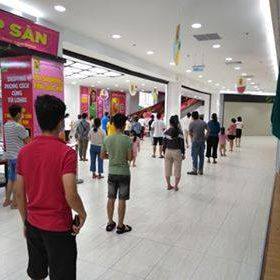 When Covid broke out I was in Da Nang in the center of Vietnam. I saw how they reacted in Vietnam and in other Asian countries. And I also saw how they reacted in Europe and America. Asian countries immediately remembered Ebola and other virus outbreaks and responded very quickly with preventive measures. In America and Europe it was as if they were introduced to a virus for the first time and it took a very long time before they decided to take the virus seriously and take measures. That is why in the first year of Covid there were hundreds of thousands of Covid deaths in America, many tens of thousands in Europe and 3 deaths in Vietnam. And Vietnam was not unique in Asia.
When Covid broke out I was in Da Nang in the center of Vietnam. I saw how they reacted in Vietnam and in other Asian countries. And I also saw how they reacted in Europe and America. Asian countries immediately remembered Ebola and other virus outbreaks and responded very quickly with preventive measures. In America and Europe it was as if they were introduced to a virus for the first time and it took a very long time before they decided to take the virus seriously and take measures. That is why in the first year of Covid there were hundreds of thousands of Covid deaths in America, many tens of thousands in Europe and 3 deaths in Vietnam. And Vietnam was not unique in Asia.

Big C – Da Nang in 2020
Due to the preventive measures, we had to close the Art for Children gallery. And there wasn’t much to do in Da Nang anymore, so I regularly went for walks in the area. But yes, there wasn’t much to see there, normally it was full of tourists, but they were gone. And having conversations with Vietnamese people had two major drawbacks: firstly, they did not understand my Vietnamese and secondly, they kept their distance and wore face masks.
After a few weeks I had seen the houses in the circle I walked, so I tried to remember the street names. At first I didn’t really notice that they were all names, especially of people I didn’t really know. When you see someone’s name every day, you ultimately want to know who it is and so began my search for the people the streets are named after.

However, street names in Vietnam are very special. In European countries, villages and towns have a central church, which is located on the church street. Later, some important houses were added, such as a school, which was located on the school street. Then the village grew and new neighborhoods were given a district name such as flower district and all streets in that neighborhood were then named after flowers.
Vietnam does not have a central church where almost everyone comes, but various pagodas, temples and village houses that are spread out. The most important place, however, is the market where the Vietnamese go to get fresh food two or three times a day, which is why the cuisine is so famous. But in most villages the market was located just outside the village so that all kinds of strange people did not come into the village.
In addition, it was not at all common for streets to be given names; occasionally, for example, if there were many silversmiths in a street, that street was called the silver street. For example, the old central district in the center of Ha Noi was in fact a district where all crafts were located, each in its own street.
The rest of the streets had no names. Now you’re probably wondering how did people know where they lived? I guess this wasn’t a problem given the social structure in Vietnam where family is the most important thing and when a Vietnamese talks about family, it’s not just a few people. Usually every family has relatives in just about every village in Vietnam. And then you don’t need street names because you always have a relative living nearby.
But yes, cities are growing and so is the number of family members. Where it used to be the uncle of your aunt’s husband, there have now been so many branches that naming streets has become a general practice. Unfortunately, this has not really made it clearer because cities like Ha Noi have large streets and they have all kinds of branches and those branches also have branches and it gives Google a headache because it can’t figure it out either.


Illustration: Bui Tinh
Da Nang has chosen to name their streets after heroes from the past. Over the past few thousand years, Vietnam has had many people visit and very often they came with the intention of staying and considering Vietnam their own. The Vietnamese didn’t like that and they rebelled, with the result that Vietnam has enough heroes from the past to keep Da Nang growing for years to come.
One problem is that there is little information about many heroes and it is usually in Vietnamese, but yes… there was covid and not much else to do, so I mapped out a nice walking tour for each district and made a booklet in which I describe who those people were after whom the streets where you walk are named.

Bui Tinh‘s workplace
Describing who they were is one thing, I also wanted to show those people’s faces and illustrator Bui Tinh took care of that. He often had a harder time figuring out what those people were like because most of the names date from the pre-mobile era.
It was a very beautiful and interesting work and when a vaccine was invented, the Vietnamese government thought it wiser for foreigners like me to return to their own country. After returning my home, we continued work virtually together and now you can get the book on Amazon.


